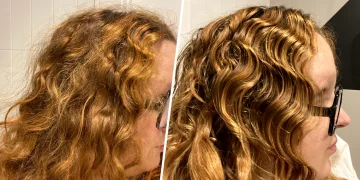Laser Hair Removal: Principles and Ideal Skin Types for Treatment
Laser hair removal has become one of the most popular and effective methods for achieving long-term hair reduction. It is widely used for both cosmetic and medical purposes, offering a convenient and relatively painless way to remove unwanted hair. But how exactly does this technology work? And is it suitable for everyone?
In this article, we will dive into the science behind laser hair removal, explore its effectiveness, and discuss which skin types are most suitable for the procedure. We’ll also examine the benefits, risks, and key considerations to help you determine whether laser hair removal is right for you.
1. Understanding Laser Hair Removal: The Science Behind the Treatment
Laser hair removal is based on the principle of selective photothermolysis, which uses the energy of light to target specific structures within the skin. It is a non-invasive cosmetic procedure that uses concentrated beams of light to remove unwanted hair.
A. What Happens During the Laser Hair Removal Process?
The laser emits a specific wavelength of light that is absorbed by the pigment (melanin) in the hair follicles. Melanin is the substance responsible for the color of hair and skin. When the laser light is absorbed by the melanin, it is converted into heat energy, which then damages the hair follicle. This damage inhibits the follicle’s ability to grow hair, effectively reducing hair growth over time.
There are different types of lasers used for hair removal, and the technology has evolved to allow for treatment on various skin tones and hair colors. However, the effectiveness of the treatment largely depends on the contrast between the color of the hair and the color of the skin.
B. Types of Lasers Used in Hair Removal
- Alexandrite Laser: Often considered the gold standard for fair skin, this laser has a shorter wavelength and works well for individuals with lighter skin tones and dark hair.
- Diode Laser: This laser is effective for people with darker skin tones and lighter hair colors. It can penetrate deeper into the skin to target hair follicles more effectively.
- Nd:YAG Laser: This laser has the longest wavelength and is particularly useful for darker skin tones. It is effective at targeting deeper hair follicles and can be used safely on more pigmented skin.
- Ruby Laser: Less commonly used, ruby lasers are effective for light skin and dark hair but may be more painful than other laser treatments.
2. How Laser Hair Removal Works: Step-by-Step Process
The laser hair removal process consists of several key steps, which are designed to ensure the safety and effectiveness of the procedure.
A. Pre-Treatment Preparations
Before undergoing laser hair removal, a consultation with a licensed technician or dermatologist is crucial. During this consultation, they will assess your skin type, hair color, and medical history. They may also provide instructions to follow before your treatment, such as avoiding sun exposure or discontinuing the use of certain skincare products.
B. Treatment Process
The treatment begins with the technician applying a cooling gel or using a cooling device to protect your skin from potential damage. They will then use a handheld laser device to deliver light pulses to the treatment area. The laser is typically passed over the skin multiple times to ensure that all the targeted hair follicles are addressed.
The sensation felt during the procedure is often described as a slight snapping or tingling, similar to the feeling of a rubber band snapping against the skin. Depending on the treatment area, the procedure can take anywhere from 15 minutes to an hour.
C. Post-Treatment Care
After the treatment, some redness or swelling may occur in the treated area, similar to a mild sunburn. This is temporary and usually subsides within a few hours. It’s important to follow post-treatment instructions, such as avoiding sun exposure and refraining from using harsh skincare products for a few days.
3. The Effectiveness of Laser Hair Removal
Laser hair removal is known for its long-lasting results. Most patients experience a significant reduction in hair growth, with results lasting for several months to years. However, multiple sessions are typically required to achieve the desired level of hair reduction, as hair grows in different cycles.
A. Why Multiple Sessions Are Necessary
Hair grows in three stages: anagen (growth), catagen (transitional), and telogen (resting). Laser hair removal is most effective during the anagen phase when the hair is actively growing. Since not all hairs are in the same phase at the same time, several sessions are required to target hair follicles in different stages of growth.
Most people require 6-8 sessions spaced about 4-6 weeks apart to achieve optimal results. After this initial treatment course, maintenance sessions may be necessary once or twice a year to maintain results.

4. Which Skin Types are Suitable for Laser Hair Removal?
The success of laser hair removal largely depends on the contrast between the color of the hair and the skin. Laser hair removal is most effective on individuals with light skin and dark hair, but advancements in technology have made it safer and more effective for people with various skin types.
A. Fair Skin and Dark Hair
Individuals with fair skin and dark hair are typically the best candidates for laser hair removal. The contrast between the light skin and dark hair allows the laser to target the hair follicle more effectively. In this case, the laser can easily distinguish between the melanin in the hair and the surrounding skin, ensuring minimal damage to the skin.
B. Olive or Medium Skin Tones
Laser hair removal is also effective for individuals with medium or olive skin tones. However, the risk of side effects such as hyperpigmentation (darkening of the skin) or hypopigmentation (lightening of the skin) may increase. To minimize these risks, a skilled technician will adjust the laser’s settings based on skin tone to ensure safe and effective treatment.
C. Dark Skin Tones
In the past, individuals with dark skin tones had limited options for laser hair removal due to the risk of burns or discoloration. However, advancements in laser technology, such as the Nd:YAG laser, have made laser hair removal safer for darker skin tones. The longer wavelength of this laser allows it to penetrate deeper into the skin without affecting the superficial layers of the skin, making it suitable for individuals with medium to dark skin.
D. Light or Blonde Hair
Laser hair removal is most effective on individuals with dark, coarse hair. People with light or blonde hair may find the treatment less effective because there is less melanin to absorb the laser energy. However, some newer laser technologies have been designed to work on lighter hair, though results may not be as dramatic as with dark hair.
5. Benefits of Laser Hair Removal
Laser hair removal offers a range of advantages over traditional methods like shaving, waxing, and depilatory creams. Some of the most significant benefits include:
A. Precision
Lasers can target individual hair follicles with precision, without affecting the surrounding skin. This makes it particularly effective for small, sensitive areas such as the upper lip, bikini line, and underarms.
B. Long-Term Results
Unlike temporary hair removal methods, laser hair removal offers long-term results. After completing a series of treatments, most people experience permanent hair reduction, with minimal regrowth.
C. Time and Cost Savings
Although the upfront cost of laser hair removal may be higher than other methods, the long-lasting results mean fewer trips to the salon or drugstore for razors or waxing appointments. Over time, this can lead to significant cost savings.
6. Risks and Side Effects of Laser Hair Removal
While laser hair removal is generally safe, there are some risks and side effects to be aware of. These can include:
A. Skin Irritation
Temporary redness, swelling, or discomfort may occur in the treated area, similar to the sensation of mild sunburn. This usually subsides within a few hours to a few days.
B. Hyperpigmentation or Hypopigmentation
If not performed properly, laser hair removal can cause changes in skin pigmentation, leading to areas of darkened or lightened skin. This is more likely to occur in individuals with darker skin tones.
C. Burns or Scarring
Though rare, improper use of the laser can cause burns or scarring. This is why it’s essential to undergo the procedure with a trained and experienced professional.
7. Conclusion: Is Laser Hair Removal Right for You?
Laser hair removal offers an effective, long-term solution to unwanted hair for many people. However, it is important to consider your skin type, hair color, and overall suitability before deciding to undergo treatment. Consulting with a trained specialist is crucial to ensure that the procedure is safe and effective for your individual needs.
Whether you have fair skin and dark hair or darker skin tones, there are lasers available that can work for you. By understanding the science behind the treatment and knowing the risks and benefits, you can make an informed decision on whether laser hair removal is the right choice for achieving smooth, hair-free skin.


















































